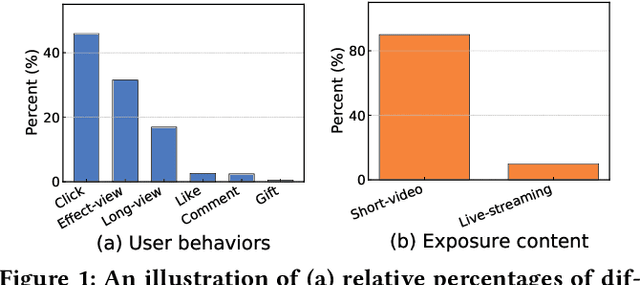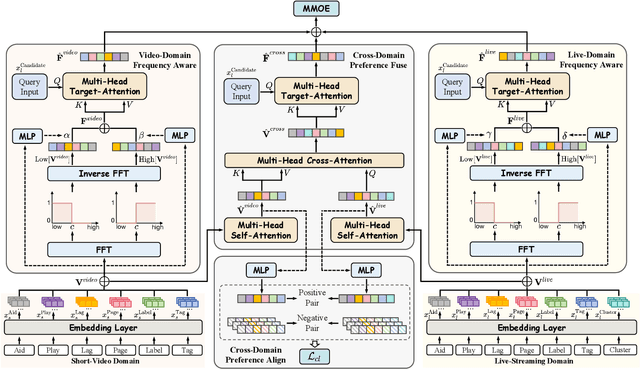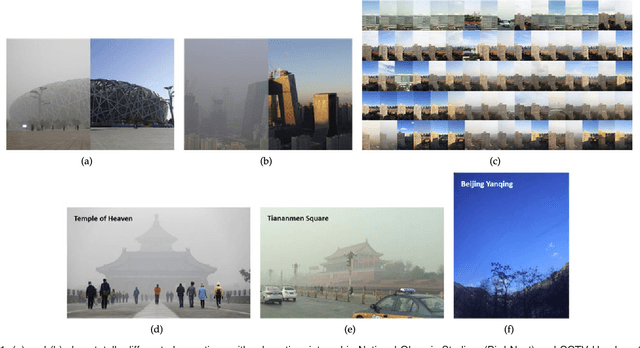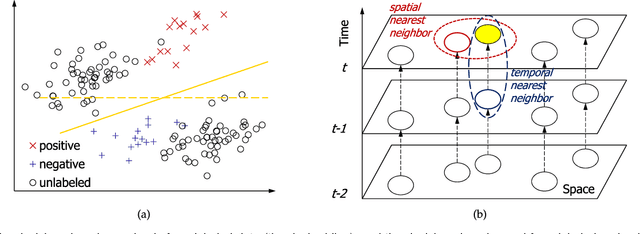Weisong Hu
Mark
FIM: Frequency-Aware Multi-View Interest Modeling for Local-Life Service Recommendation
Apr 30, 2025Abstract:People's daily lives involve numerous periodic behaviors, such as eating and traveling. Local-life platforms cater to these recurring needs by providing essential services tied to daily routines. Therefore, users' periodic intentions are reflected in their interactions with the platforms. There are two main challenges in modeling users' periodic behaviors in the local-life service recommendation systems: 1) the diverse demands of users exhibit varying periodicities, which are difficult to distinguish as they are mixed in the behavior sequences; 2) the periodic behaviors of users are subject to dynamic changes due to factors such as holidays and promotional events. Existing methods struggle to distinguish the periodicities of diverse demands and overlook the importance of dynamically capturing changes in users' periodic behaviors. To this end, we employ a Frequency-Aware Multi-View Interest Modeling framework (FIM). Specifically, we propose a multi-view search strategy that decomposes users' demands from different perspectives to separate their various periodic intentions. This allows the model to comprehensively extract their periodic features than category-searched-only methods. Moreover, we propose a frequency-domain perception and evolution module. This module uses the Fourier Transform to convert users' temporal behaviors into the frequency domain, enabling the model to dynamically perceive their periodic features. Extensive offline experiments demonstrate that FIM achieves significant improvements on public and industrial datasets, showing its capability to effectively model users' periodic intentions. Furthermore, the model has been deployed on the Kuaishou local-life service platform. Through online A/B experiments, the transaction volume has been significantly improved.
FARM: Frequency-Aware Model for Cross-Domain Live-Streaming Recommendation
Feb 13, 2025



Abstract:Live-streaming services have attracted widespread popularity due to their real-time interactivity and entertainment value. Users can engage with live-streaming authors by participating in live chats, posting likes, or sending virtual gifts to convey their preferences and support. However, the live-streaming services faces serious data-sparsity problem, which can be attributed to the following two points: (1) User's valuable behaviors are usually sparse, e.g., like, comment and gift, which are easily overlooked by the model, making it difficult to describe user's personalized preference. (2) The main exposure content on our platform is short-video, which is 9 times higher than the exposed live-streaming, leading to the inability of live-streaming content to fully model user preference. To this end, we propose a Frequency-Aware Model for Cross-Domain Live-Streaming Recommendation, termed as FARM. Specifically, we first present the intra-domain frequency aware module to enable our model to perceive user's sparse yet valuable behaviors, i.e., high-frequency information, supported by the Discrete Fourier Transform (DFT). To transfer user preference across the short-video and live-streaming domains, we propose a novel preference align before fuse strategy, which consists of two parts: the cross-domain preference align module to align user preference in both domains with contrastive learning, and the cross-domain preference fuse module to further fuse user preference in both domains using a serious of tailor-designed attention mechanisms. Extensive offline experiments and online A/B testing on Kuaishou live-streaming services demonstrate the effectiveness and superiority of FARM. Our FARM has been deployed in online live-streaming services and currently serves hundreds of millions of users on Kuaishou.
Deep Air Learning: Interpolation, Prediction, and Feature Analysis of Fine-grained Air Quality
Apr 11, 2018



Abstract:The interpolation, prediction, and feature analysis of fine-gained air quality are three important topics in the area of urban air computing. The solutions to these topics can provide extremely useful information to support air pollution control, and consequently generate great societal and technical impacts. Most of the existing work solves the three problems separately by different models. In this paper, we propose a general and effective approach to solve the three problems in one model called the Deep Air Learning (DAL). The main idea of DAL lies in embedding feature selection and semi-supervised learning in different layers of the deep learning network. The proposed approach utilizes the information pertaining to the unlabeled spatio-temporal data to improve the performance of the interpolation and the prediction, and performs feature selection and association analysis to reveal the main relevant features to the variation of the air quality. We evaluate our approach with extensive experiments based on real data sources obtained in Beijing, China. Experiments show that DAL is superior to the peer models from the recent literature when solving the topics of interpolation, prediction, and feature analysis of fine-gained air quality.
 Add to Chrome
Add to Chrome Add to Firefox
Add to Firefox Add to Edge
Add to Edge